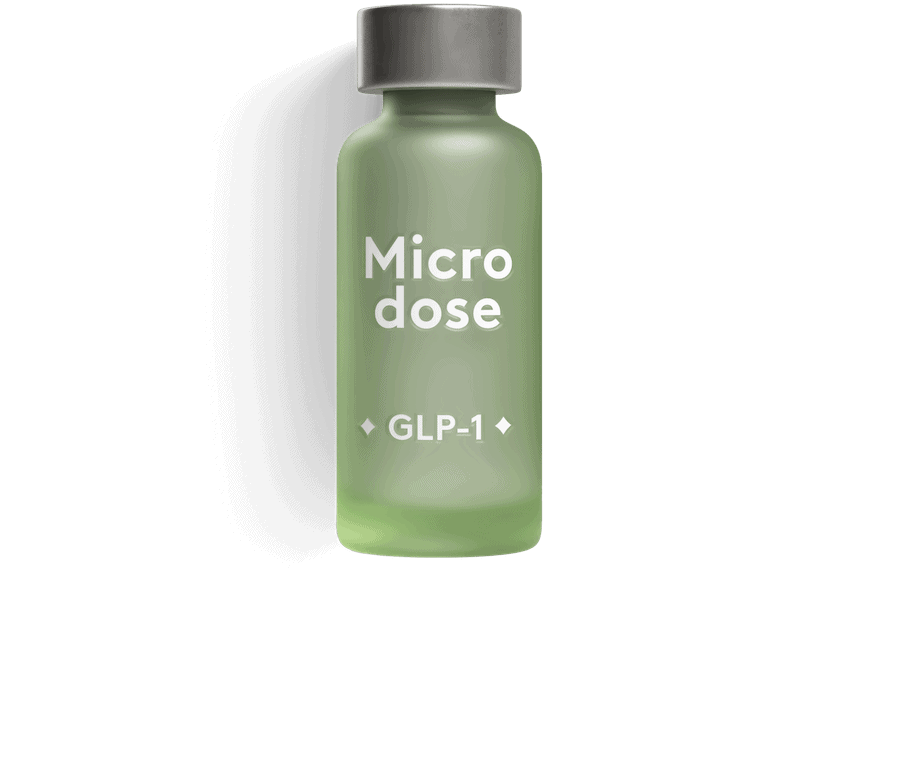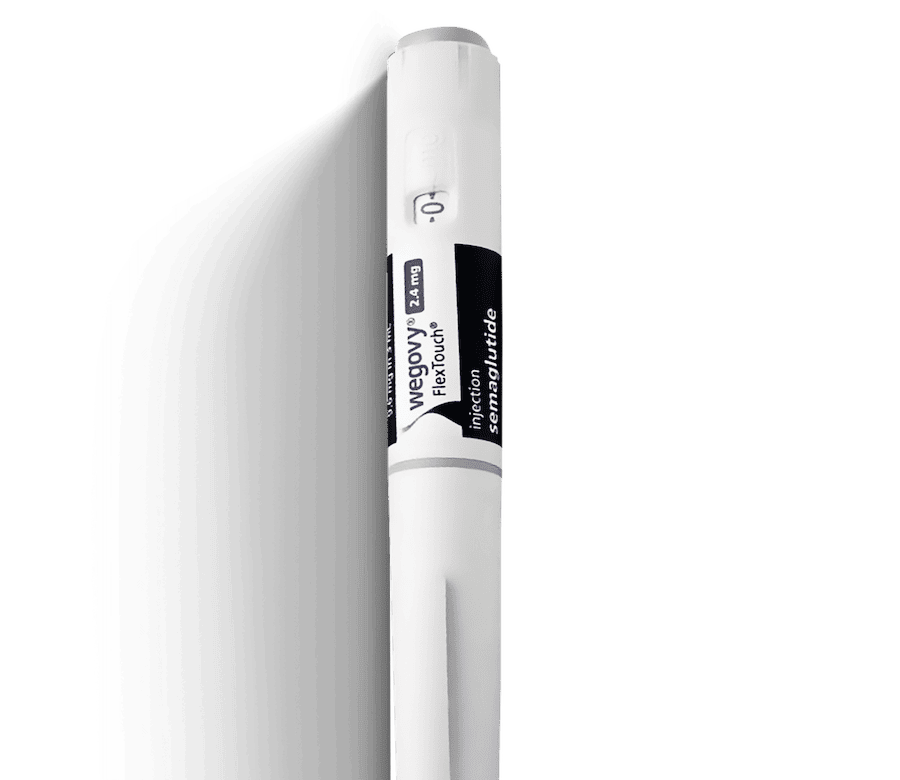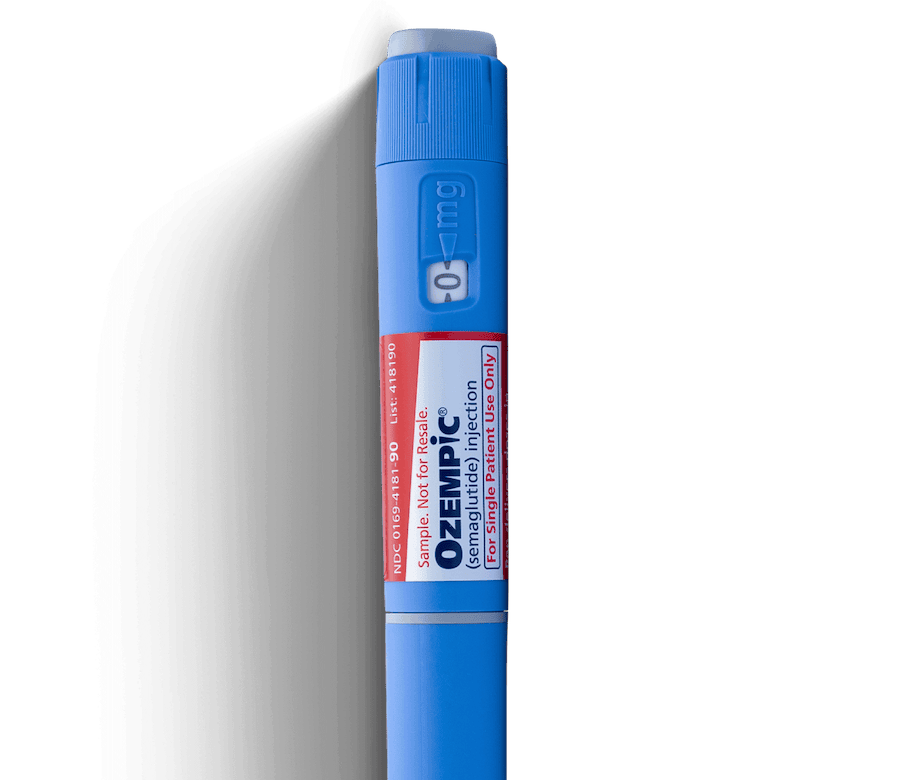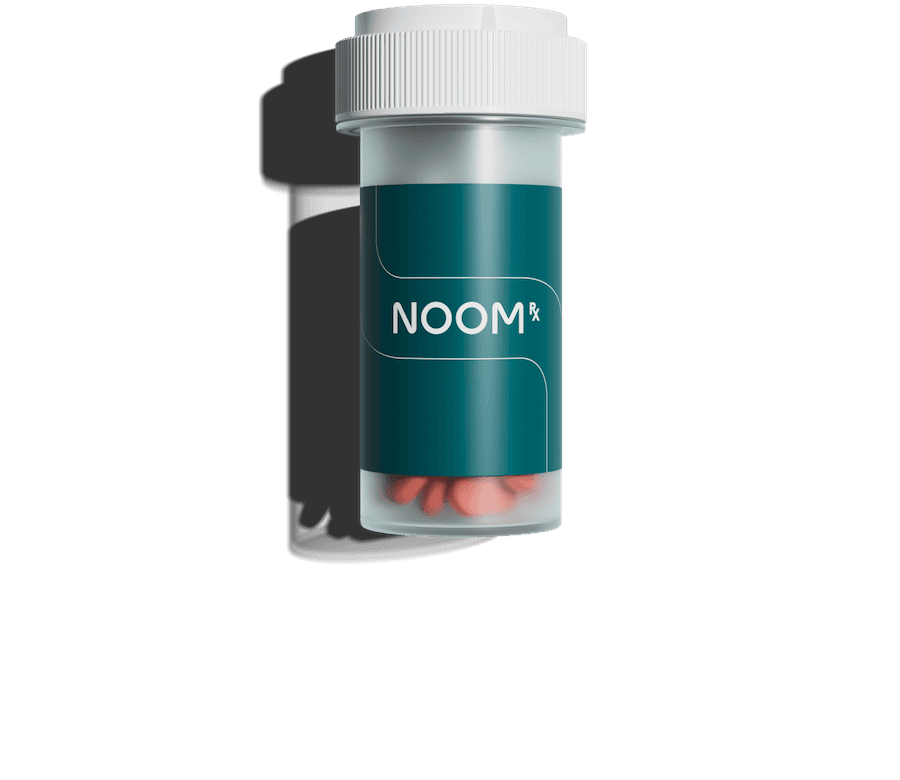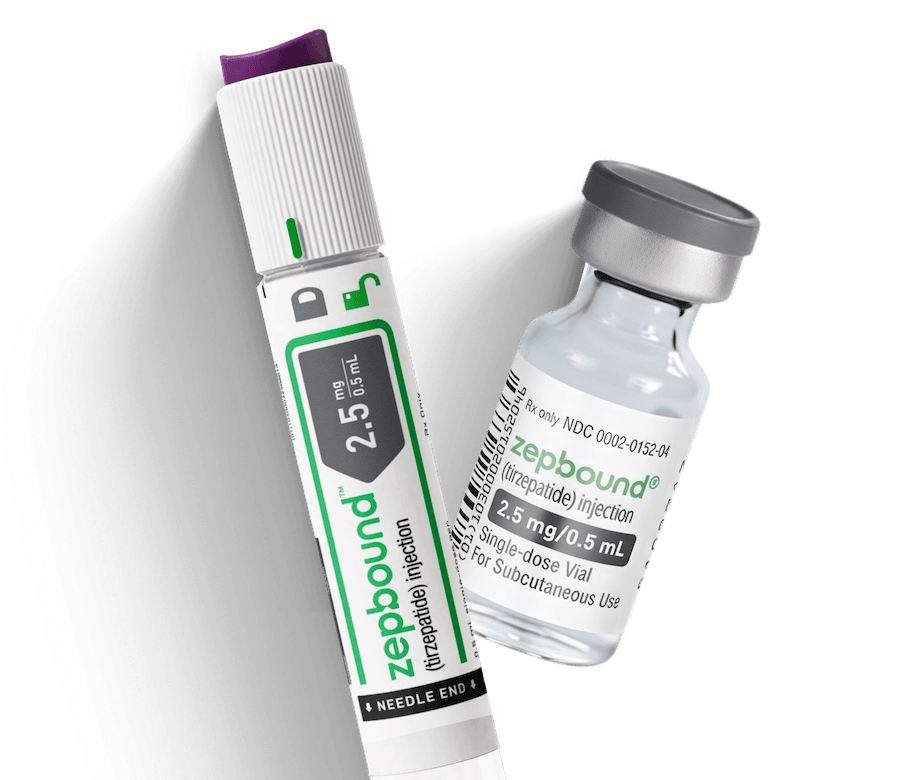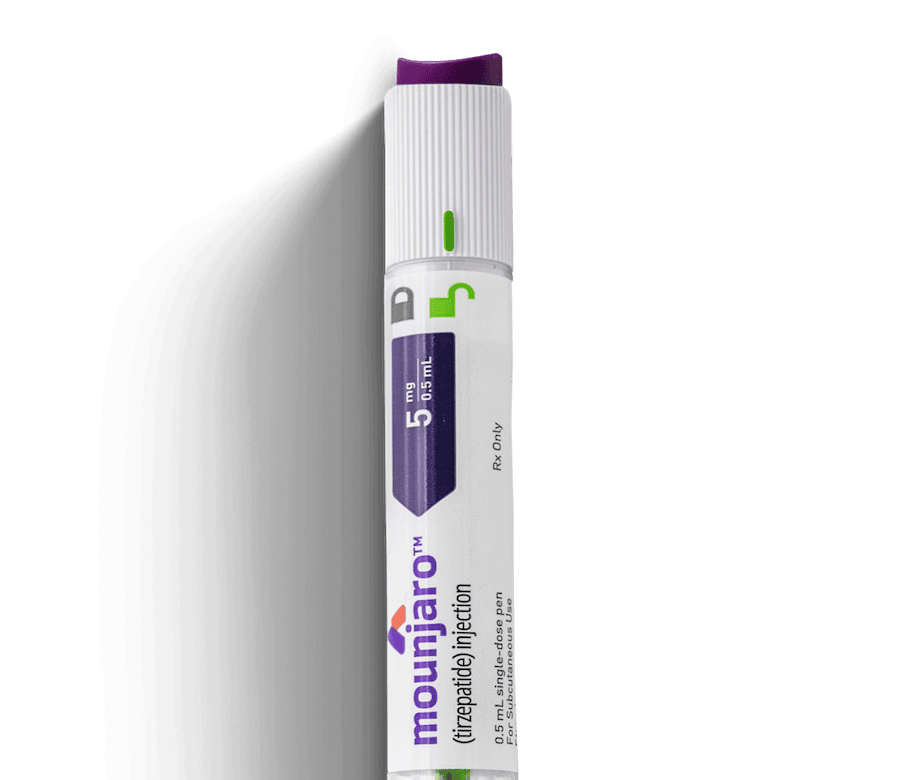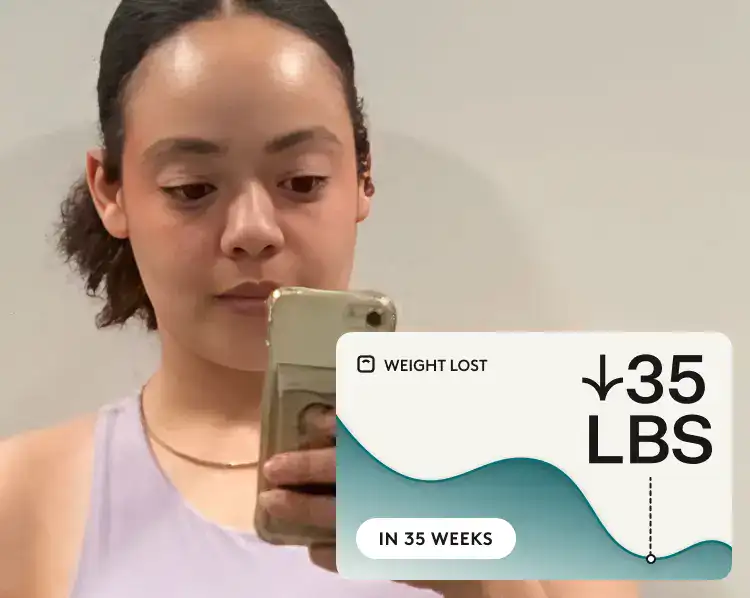Key takeaways:
- Tirzepatide is a drug that reduces appetite, slows digestion, and regulates blood sugar by mimicking two hormones (GLP-1 and GIP).
- It’s the active ingredient in two medications: Mounjaro® and Zepbound®.
- Zepbound® is approved for weight management and obstructive sleep apnea (OSA), while Mounjaro® is approved to treat type-2 diabetes.
If you’ve been following the conversation around new weight loss medications, you’ve probably heard the name tirzepatide come up again and again. This drug, part of the GLP-1 receptor agonist family, was first approved to treat type 2 diabetes under the name Mounjaro®. It was later approved for weight loss and obstructive sleep apnea (OSA) under the name Zepbound®.
Both medications are made by Eli Lilly and contain the same active ingredient, tirzepatide, at the same dose options. The main differences come down to pricing and insurance coverage, which can vary depending on the condition being treated. Zepbound® is also available as single-dose vials and syringes when you get them through the manufacturer.
So, what exactly is tirzepatide? We’ll break down how it works, how it differs from semaglutide (the active ingredient in Ozempic® and Wegovy®), how effective it is for weight loss, potential side effects, cost, and more.
You’ll also learn how to discuss with your doctor whether tirzepatide might be the right fit for your health goals and where to get a prescription for it.
What is tirzepatide?
Tirzepatide is part of the GLP-1 receptor agonist family, meaning it acts like GLP-1 (glucagon-like peptide-1), a natural hormone your body releases after eating. It binds to GLP-1 receptors in your brain, pancreas, and digestive tract, helping to reduce appetite, slow digestion, and regulate blood sugar, but in a way that’s stronger and longer-lasting than your body’s own GLP-1 response.
Unlike Ozempic® and Wegovy®, which contain semaglutide and act only on GLP-1, tirzepatide also mimics another hormone called GIP (glucose-dependent insulinotropic polypeptide). GIP helps enhance insulin release, improve how your body uses fat for energy, and may even reduce nausea, a common side effect of GLP-1 medications.
By mimicking both GLP-1 and GIP, tirzepatide provides a dual-action effect that helps manage hunger, slow digestion, and stabilize blood sugar more efficiently.
What’s the difference between Zepbound® and Mounjaro®?
Again, Zepbound® and Mounjaro® both contain tirzepatide in the same doses: 2.5, 5, 7.5, 10, 12.5, and 15 mg. The main difference between Zepbound® and Mounjaro® isn’t in the medication itself; it’s in how it’s approved, which can affect insurance coverage, pricing, and how it’s prescribed.
- Mounjaro® is FDA-approved to treat type 2 diabetes, but many healthcare providers also prescribe it off-label for weight loss. It comes as a prefilled injection pen.
- Zepbound® contains the same active ingredient but is FDA-approved for weight management and OSA. It comes as a prefilled injection pen or a vial and syringe, which can be more affordable for some people.
How much weight can I lose taking tirzepatide?
Tirzepatide has shown impressive results in clinical studies. While results vary depending on your starting weight, dose, and lifestyle habits, research gives us a clear picture of what’s typical.
Here’s the average weight loss you can expect over 72 weeks, according to studies:
- 5 mg weekly: 15% of body weight
- 10 mg weekly: 19% of body weight
- 15 mg weekly: 21% of body weight
Weight loss with tirzepatide happens gradually. Most people start noticing changes within the first few weeks, but the most significant results typically show up after 6 to 12 months of consistent use. A real-world study of more than 4,000 adults with type 2 diabetes found that people who stayed on their medication for at least six months lost an average of 13% of their body weight.
Tirzepatide also works best as part of a bigger, sustainable plan that fits your life. While the medication itself can significantly reduce appetite, eating a balanced, lower-calorie diet will give you the best chance of reaching and maintaining your goals.
Tirzepatide: Cost and insurance
Tirzepatide can be very effective for weight management and diabetes care, but it can also come with a steep price tag. Let’s take a look at what it typically costs without insurance.
- Mounjaro® costs around $1,080 per month
- Zepbound® is about $1,086 per month.
Since there’s currently no generic version available for tirzepatide, all prescriptions are brand-name only.
The good news is that most people don’t end up paying the full list price. What you actually pay depends on several factors: your insurance coverage, eligibility for manufacturer savings programs, and even the pharmacy you choose. Depending on your situation, these factors can make a substantial difference in your monthly cost:
- Private Insurance: Many private insurance plans list Mounjaro® as a tiered specialty drug, which means that how much is covered and the copays can vary. If Mounjaro® is covered, monthly copays typically range from $25 to $150. However, you might have to pay more if you haven’t met your deductible. Always verify coverage details with your insurance provider to avoid surprises at the pharmacy.
- Medicare: Medicare will cover Mounjaro® when prescribed for type 2 diabetes, but the costs vary. If you’re enrolled in Medicare Part D or a Medicare Advantage plan, you can typically expect copays between $10 and $50 per month when using Mounjaro® for diabetes management. If you’re looking to use Mounjaro® solely for weight loss, Medicare will not cover it.
- Medicaid: Mounjaro® coverage varies by state. Many state Medicaid programs will cover Mounjaro® if it’s prescribed for diabetes, but eligibility criteria differ. Medicaid coverage for weight loss medications is still limited, with only 13 state Medicaid programs covering GLP-1s for weight management.
- Manufacturer’s discount programs: Eli Lilly offers savings cards for Mounjaro®, bringing costs down to as little as $25 per month for eligible patients with commercial insurance.
Learn more: Mounjaro® costs in 2025: With and without insurance coverage
- Private Insurance: If you have private or commercial insurance, coverage for Zepbound® is still scarce but is growing. Some private insurers do cover it, but they will require prior authorization. In many cases, insurance only pays for weight loss medications if there’s an underlying medical condition, like OSA or diabetes. Since coverage rules vary, checking with your insurance provider is the best way to know what you’ll pay.
- Medicare: For Medicare beneficiaries, coverage depends on the prescribed indication:
- For OSA: Many Medicare Part D and Advantage plans now cover it for this purpose. Prior authorization is required, and copays typically range from $10 to $50 per month.
- For weight loss: Medicare doesn’t cover medications prescribed solely for weight loss.
- Medicaid: Medicaid coverage for Zepbound® varies widely by state.
- Manufacturer’s discount programs: Eli Lilly offers savings cards for both Mounjaro® and Zepbound®, bringing costs down to as little as $25 per month for eligible patients with commercial insurance.
Learn more: Zepbound® costs in 2025: With and without insurance coverage
Rx weight loss, the right way, with Noom
Get access to prescription weight loss medication with Noom.Tirzepatide: Dosage and how to take it
Tirzepatide is a once-weekly injection that you give yourself just under the skin. Everyone starts at the lowest dose and then it will increase gradually until you reach the dose that helps you lose steady weight (1-2 pounds per week) with the fewest side effects.
Both Mounjaro and Zepbound are available in the same dosage strengths:
- 2.5 mg
- 5 mg
- 7.5 mg
- 10 mg
- 12.5 mg
- 15 mg
While everyone starts at 2.5 mg weekly, your provider will adjust your tirzepatide dosage based on how your body responds and how well you tolerate the medication. The goal is to keep you losing steady weight while minimizing side effects. Here’s what that might look like:
- Starting dose: 2.5 mg weekly (weeks 1 through 4)
- Dose escalation:
- Increase as needed and tolerated, typically every 4 weeks:
- 5 mg weekly
- 7.5 mg weekly
- 10 mg weekly
- 12.5 mg weekly
- 15 mg weekly
- Increase as needed and tolerated, typically every 4 weeks:
- Maintenance dose: Any dose can be used for maintenance if it works for you.
- Maximum dose: 15 mg once weekly.
Learn more: Tirzepatide dosage guide: How to find the right dose for weight loss
How to take tirzepatide: The differences between Mounjaro® and Zepbound®
Both Mounjaro® and Zepbound® are taken as weekly injections under the skin (subcutaneous) that you give yourself. The difference will be if you use the vial and syringe form with Zepbound®.
Here’s what you need to know about each method:
Tirzepatide should always be injected just under the skin, never directly into muscle or veins. Common injection sites include:
- Stomach (abdomen): About two inches away from your belly button.
- Thigh: Upper front or outer area.
- Upper arm: The back side of your upper arm, if someone else is giving you the injection.
Rotating injection sites each week helps reduce irritation and improve absorption. Avoid injecting into areas that are bruised, tender, hard, scarred, or have skin conditions.
How to take Mounjaro® and Zepbound® prefilled pens
Instructions:
- Remove the pen from the fridge when ready to use.
- Check liquid: clear to slightly yellow, no particles, not cloudy or frozen.
- Wash your hands and choose the injection site.
- Pull off the gray base cap (don’t touch or recap the needle).
- Place the clear base flat on the skin.
- Turn the lock ring to unlock.
- Press and hold the purple injection button for up to 10 seconds.
- First click: injection starts.
- Second click: injection complete.
- Check that the gray plunger is visible.
- Dispose of the pen in an FDA-approved sharps container.
Storage:
- Store unopened pens in the refrigerator (36°F to 46°F).
- Unopened pens can be kept at room temperature for 21 days.
- Never freeze your pen, and discard it if it is accidentally frozen or damaged.
How to take Zepbound® single-dose vials
Instructions:
- Remove the vial from the fridge and inspect it. It should be clear or slightly yellow, with no particles, and not cloudy or frozen.
- Gather supplies: vial, syringe, needle, alcohol swab, gauze, and sharps container.
- Clean the rubber stopper with an alcohol swab.
- Insert the needle, inject air into the vial, then draw medication.
- Remove air bubbles from the syringe.
- Inject into the chosen site and hold the needle in for 5 seconds after the plunger is fully pressed.
- Dispose of the syringe and needle in a sharps container.
Storage:
- Unused vials should remain refrigerated and can be stored at room temperature (up to 86°F) for up to 21 days.
- Discard opened or used vials immediately after injection.
Read the detailed instructions for using Zepbound® vials for more information.
Learn more:
Is the dose of tirzepatide different for weight loss vs. diabetes
The dose won’t necessarily be different for weight loss or type 2 diabetes management. It will depend on how your body reacts to the medication in terms of weight loss or blood sugar management, balanced against side effects.
In general, people lost more weight at the higher doses of tirzepatide. People also tended to experience greater diabetes management results at higher doses. According to one study, HbA1c reductions were greater with the 10 mg and 15 mg doses of tirzepatide versus the lower doses.
What happens if you miss a dose?
If you forget a dose, take it as soon as you remember if it’s within 4 days of your scheduled injection. Then continue with your regular schedule the following week. If more than 4 days have passed, skip the missed dose and wait until your next scheduled injection. Taking it too close together can increase the risk of side effects.
Tirzepatide: Side effects and safety
Tirzepatide can sometimes cause some uncomfortable side effects, and digestive issues like nausea, diarrhea, vomiting, constipation, or stomach discomfort are the most common. Most people find these symptoms ease gradually as their system adjusts to the first dose or a dose increase.
Common side effects
Digestive changes are by far the most common reactions to tirzepatide. Tirzepatide slows down your stomach, and that means food stays in it a bit longer. Your digestive system has to adjust, which can cause things like nausea, diarrhea, or constipation at first.
Let’s take a closer look at the most common side effects with different doses of tirzepatide:
| Symptom | Tirzepatide 5 mg | Tirzepatide 10 mg | Tirzepatide 15 mg | What can help |
|---|---|---|---|---|
| Nausea | 25% | 29% | 28% | Eating small, low-fat meals and avoiding greasy or spicy foods can reduce nausea. |
| Diarrhea | 19% | 21% | 23% | Staying hydrated and choosing low-fiber, easy-to-digest foods may help. |
| Vomiting | 8% | 11% | 13% | Clear fluids and bland foods like toast or crackers are frequently recommended to soothe an upset stomach. |
| Constipation | 17% | 14% | 11% | Doctors often advise increasing fiber slowly, drinking more water, and adding gentle movement. |
| Abdominal pain | 9% | 9% | 10% | Sticking with clear liquids and briefly pausing solid foods can help ease abdominal pain. |
| GERD (indigestion) | 9% | 9% | 10% | Eating slowly and avoiding lying down right after meals can help. |
Rare but more severe side effects
While rare, tirzepatide can cause more serious complications. Knowing what to watch for means you can act quickly to get emergency medication attention if something doesn’t feel right.
- Pancreatitis: Seek medical attention immediately if you develop severe stomach pain that may spread to your back, especially if it’s accompanied by nausea or vomiting.
- Allergic reactions: Stop the medication and get emergency care if you experience swelling of the face, tongue, or throat; trouble breathing; or widespread rash.
- Vision changes: Get any sudden vision changes checked immediately.
- Low blood sugar (hypoglycemia): If you have diabetes and use medications like insulin or other blood sugar-lowering drugs, watch for symptoms like dizziness, shakiness, sweating, or confusion.
- Kidney problems: This can be linked to dehydration from digestive side effects. If you experience worsening nausea, vomiting, or reduced urination, you should get medical attention.
- Thyroid tumors: Contact your provider if you notice a lump in your neck, hoarseness, difficulty swallowing, or shortness of breath. Tirzepatide carries a warning about thyroid C-cell tumors based on animal studies, though this hasn’t been confirmed in humans.
Learn more: Tirzepatide side effects: Symptom guide and management tips
Who shouldn’t take tirzepatide?
Tirzepatide isn’t right for everyone, especially if you have certain health conditions that could raise the risk of complications. Here’s when it may not be a safe choice:
- You or a close family member has had medullary thyroid carcinoma (MTC) or multiple endocrine neoplasia syndrome type 2 (MEN 2).
- You’re allergic to tirzepatide or any of its ingredients.
- You’re pregnant, planning to get pregnant, or breastfeeding.
What’s the difference between tirzepatide and semaglutide?
Tirzepatide and semaglutide both fall into the GLP-1 medication category, but they are different.
Both medications can lower appetite, slow stomach emptying, and regulate blood sugar, but tirzepatide mimics two hormones (GLP-1 and GIP) while semaglutide mimics just GLP-1. Studies show people lose more weight on average with the highest doses of tirzepatide than with the highest doses of semaglutide.
People also report that some side effects are lessened on tirzepatide medications (Mounjaro and Zepbound) than semaglutide medications (Ozempic and Wegovy).
In terms of cost, they can be very similarly priced due to manufacturers’ discounts. When used for weight loss, insurance coverage is rare for both.
Here’s a look at some of the important differences side by side:
| Medication details | Tirzepatide | Semaglutide |
|---|---|---|
| Brand names | Zepbound®, Mounjaro® | Ozempic®, Wegovy® |
| How it works | Works by mimicking two hormones, GLP-1 and GIP. | Works by mimicking GLP-1. |
| Approved for | Zepbound®: Approved for weight loss and for moderate-to-severe OSA Mounjaro®: Approved for type 2 diabetes (off-label for weight loss). | Ozempic®: Approved for type 2 diabetes (off-label for weight loss). Wegovy®: Approved for weight loss and for heart disease. Also approved for MASH, a serious liver disease, with moderate to advanced fibrosis. |
| Cost | Zepbound®: $1,086 per month for prefilled pens, or $349 for the 2.5 mg dose / $499 for higher doses with LillyDirect’s single-dose vials. Mounjaro®: $1,080 per month. | Wegovy®: $1,350 per month or $499 through the NovoCare Pharmacy. Ozempic®: $997 per month. |
| Weight loss potential | People lost an average of nearly 21% of their body weight over 72 weeks with tirzepatide. | People lost an average of 15% of body weight in 68 weeks with injectable semaglutide. |
Learn more: Tirzepatide vs. semaglutide for weight loss: Which one works best?
Frequently asked questions about tirzepatide
People considering tirzepatide often have practical questions beyond the basics of how it works and what to expect. These common questions address everything from brand differences to lifestyle considerations and long-term safety concerns.
Is Zepbound® the same as Mounjaro®?
Zepbound® and Mounjaro® contain the exact same active ingredient (tirzepatide) in the same doses. The difference is in their FDA-approved uses and how they are taken.
- Zepbound® is approved specifically for weight management and OSA and is also available in a vial and syringe format.
- Mounjaro® is approved for type 2 diabetes management and only comes as a pre-filled pen.
Both work identically in your body and follow the same dosing schedule.
Learn more: Zepbound® vs. Mounjaro®: What’s the difference?
Which is better for weight loss: Wegovy® or Zepbound®?
Studies suggest Zepbound® may produce greater weight loss than Wegovy® on average: 21% versus 15% body weight loss at one year. Both are effective options, and the best choice depends on your individual response, insurance coverage, and how well you tolerate each medication.
Do Wegovy® and Zepbound® have different side effects?
While one doesn’t necessarily cause different side effects than the other, some effects might occur more often with Wegovy® than Zepbound®. People taking Wegovy® or Zepbound® experience similar rates of nausea, diarrhea, abdominal pain, and dyspepsia, but the rates of vomiting, constipation, and GERD may be higher with Wegovy®.
Learn more: Wegovy® vs. Zepbound® for weight loss: Which one works best?
Does tirzepatide cause hair loss, muscle loss, or facial fat loss?
You may have heard about Ozempic® causing things like hair loss, muscle loss, and the loss of facial fat. For tirzepatide, hair thinning affects about 4 to 5% of people, though this is often because of too rapid weight loss rather than the medication itself.
Similarly, muscle and facial fat loss can occur with any significant weight reduction, but combining tirzepatide with strength training and adequate protein intake helps preserve muscle mass. Most hair loss is temporary and improves as weight loss stabilizes.
Can you drink alcohol while taking tirzepatide?
There’s no direct interaction between tirzepatide and alcohol, but drinking can worsen nausea and other digestive side effects. Alcohol also adds extra calories that don’t support your weight loss goals. If you choose to drink, always consult your doctor first and follow their advice.
How long can you safely take tirzepatide?
Tirzepatide is designed for long-term use, and many people take it long-term to maintain their weight loss. Studies have tracked people for up to 72 weeks and found good safety results, and ongoing research is looking at longer-term effects. Your healthcare provider will monitor you regularly and help determine the right duration based on your individual health needs and goals.
Can you stop taking tirzepatide abruptly?
While stopping tirzepatide abruptly isn’t dangerous, it often leads to increased appetite and weight regain. Most healthcare providers recommend a gradual tapering approach when discontinuing the medication. Working with a structured program that includes behavioral support can help you maintain your progress after stopping.
How long does tirzepatide stay in your system?
Tirzepatide has a half-life of about 5 days, meaning it takes roughly 5 days for half the medication to leave your body. It takes about 4 to 5 weeks for the medication to be completely eliminated after your last dose. This extended timeline is why you only need to inject once weekly and why effects can persist for several days if you miss a dose.
How does tirzepatide help with sleep apnea?
Zepbound® is FDA-approved to treat obstructive sleep apnea (OSA). Studies showed tirzepatide reduced sleep apnea severity by an average of 20 to 24 events per hour after one year. The improvement comes primarily from weight loss, which reduces tissue around the airway that can block breathing during sleep.
What dose of tirzepatide is most effective?
Higher doses generally produce more weight loss. Studies show an average weight loss of:
- 15% at 5 mg weekly
- 20% at 10 mg weekly
- 21% at 15 mg weekly
But the most effective dose for you balances results with tolerability. Many people achieve their goals at lower doses with fewer side effects, so your healthcare provider will find the right balance for your situation.
The bottom line: Tirzepatide is very effective for weight loss
Tirzepatide is one of the most effective medications for weight management, with studies showing average weight reductions of around 21% when combined with healthy lifestyle changes—and some people losing even more.
That said, success depends on more than just the medication. It requires following a supervised dosing plan, managing side effects, and understanding costs. Zepbound® is currently the only FDA-approved version of tirzepatide for weight loss, and it’s not always covered by insurance. Because many people take it for six months or longer (and sometimes long-term to maintain results), it’s worth considering both short- and long-term costs upfront.
While tirzepatide tends to lead to greater weight loss than semaglutide, results vary based on factors like consistency, nutrition, and movement. The best outcomes happen when medication is paired with structured lifestyle support.
If you’re exploring tirzepatide or other weight loss medications, see if you qualify for Noom Med. You’ll be matched with a clinician who can determine whether a GLP-1 is right for you, prescribe it if needed, and combine it with Noom’s behavioral coaching—helping you build sustainable habits that last long after the medication.
Note: Ozempic® and Mounjaro® are not FDA-approved to treat obesity or for weight loss.
Why you can trust us
At Noom, we’re committed to providing health information that’s grounded in reliable science and expert review. Our content is created with the support of qualified professionals and based on well-established research from trusted medical and scientific organizations. Learn more about the experts behind our content on our Health Expert Team page.



